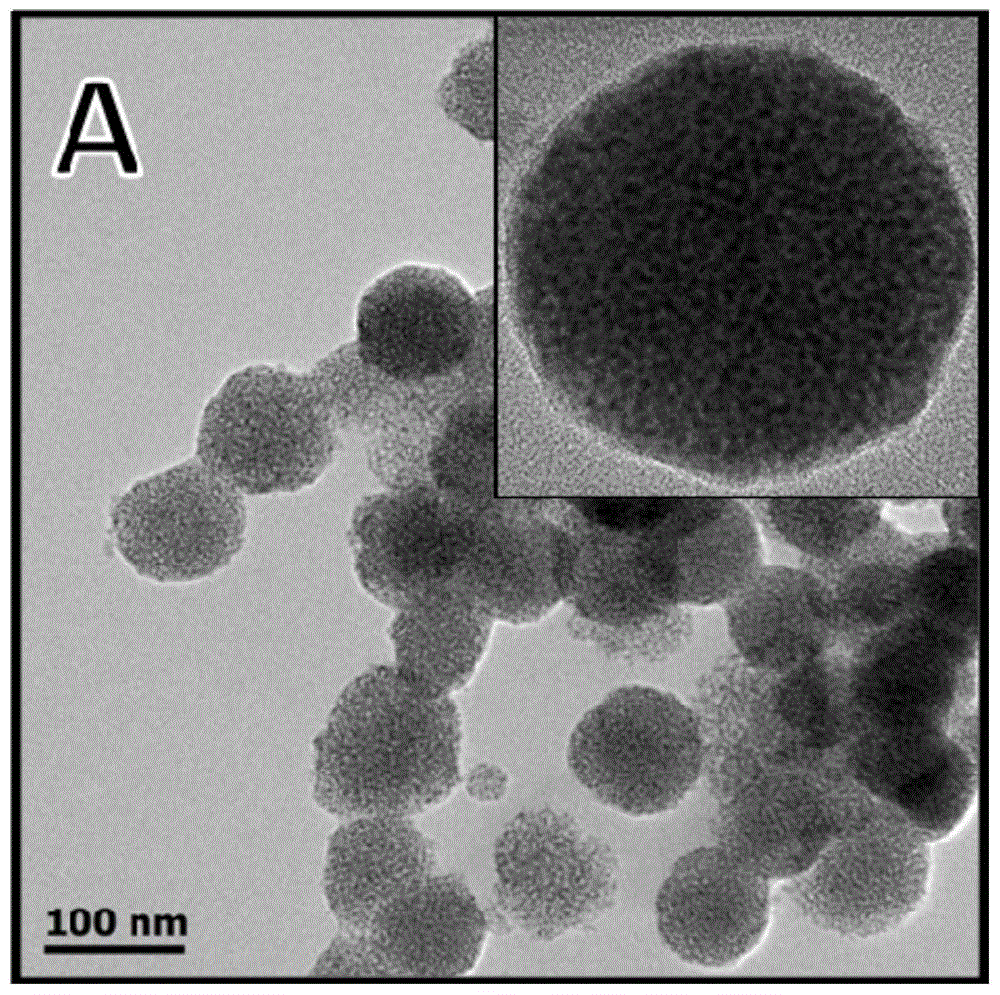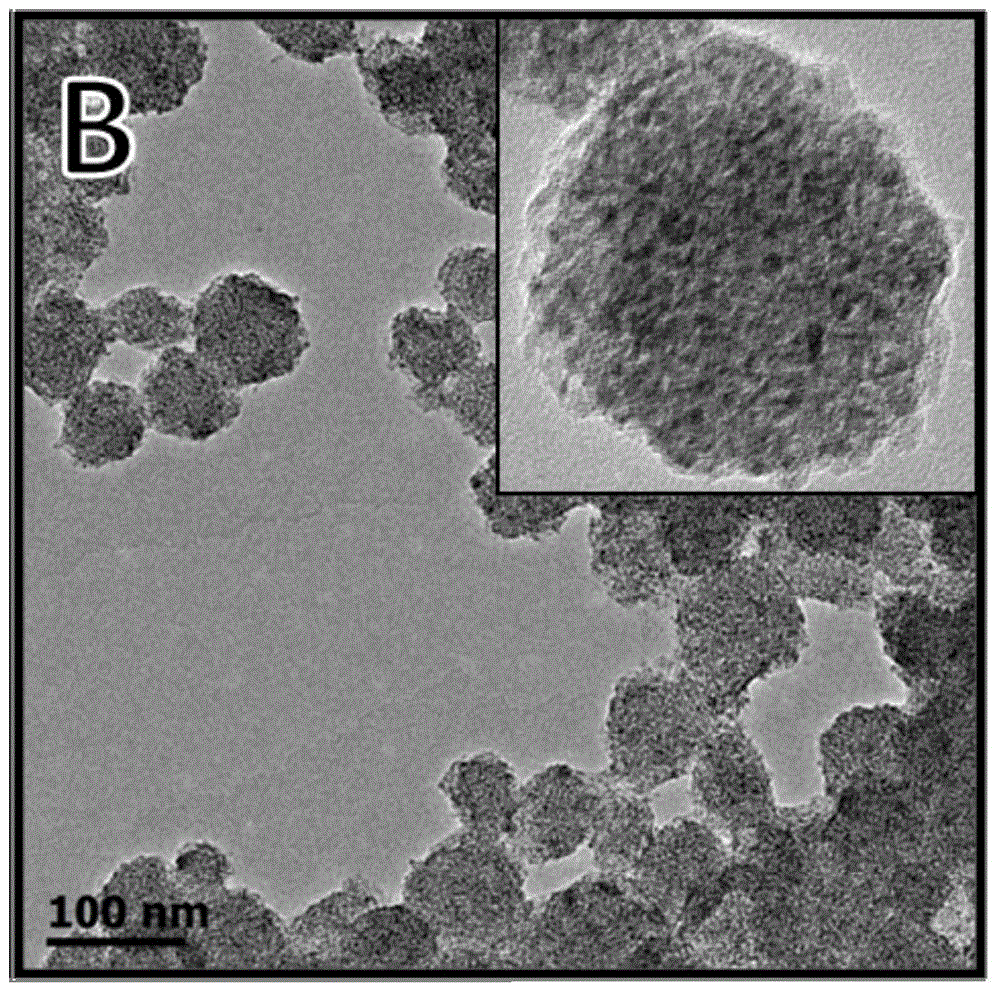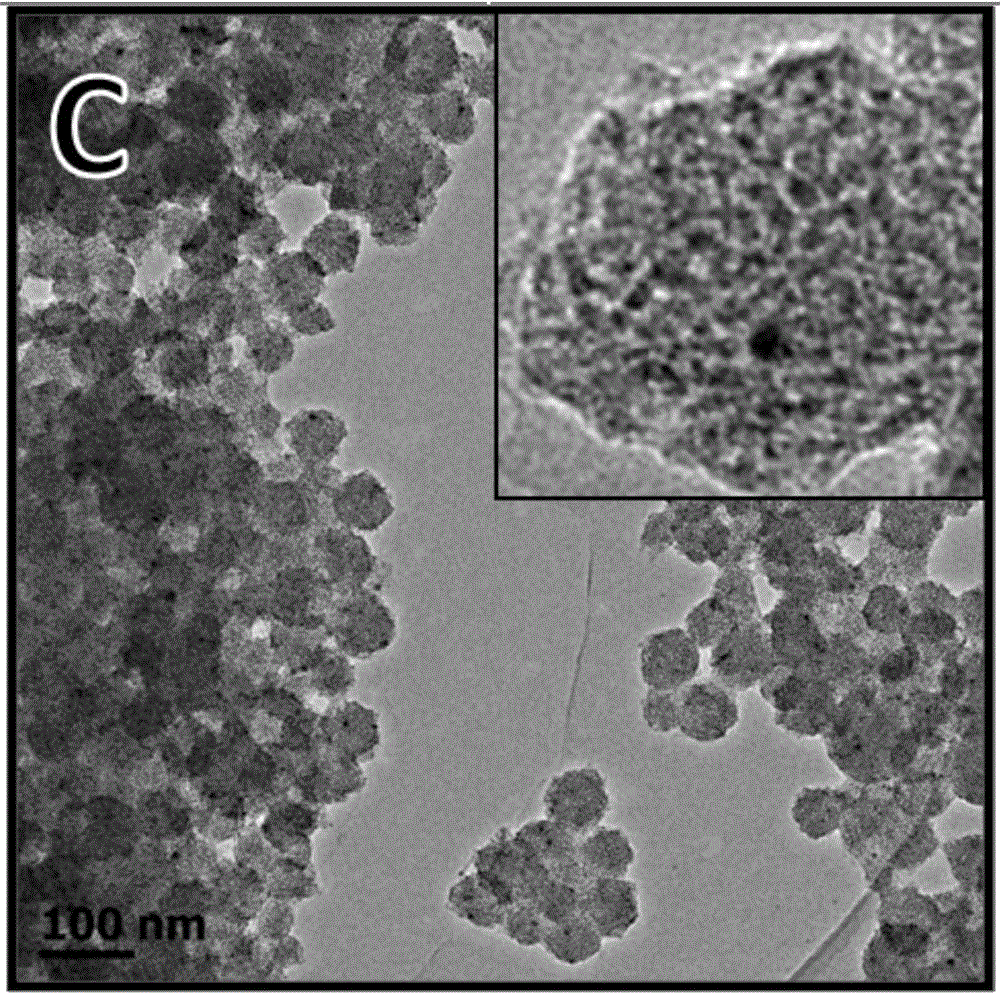Nano-cluster photocatalyst utilizing surface plasmon resonance effect and electron transport synergy and its preparation method and application
A surface plasmon and resonance effect technology, applied in chemical instruments and methods, physical/chemical process catalysts, metal/metal oxide/metal hydroxide catalysts, etc., can solve low efficiency, low light absorption efficiency, and recombination efficiency Problems such as low photocatalytic water splitting efficiency have achieved great application prospects, mild preparation method conditions, and good photocatalytic water splitting hydrogen production performance.
- Summary
- Abstract
- Description
- Claims
- Application Information
AI Technical Summary
Problems solved by technology
Method used
Image
Examples
Embodiment 1
[0037] Preparation of reference samples:
[0038] Preparation of CdSe nanocluster photocatalyst:
[0039]At room temperature, 1 ml of cyclohexane dispersed with 3nm CdSe nanocrystals and 10 ml of sodium dodecyl sulfate (SDS) aqueous solution were used to form a microemulsion under ultrasonic conditions. The ultrasonic power was 20%, and the ultrasonic power was 5 min. Wherein, the concentration of CdSe in the cyclohexane dispersion is 5 mg / ml, and the concentration of sodium lauryl sulfate in the aqueous solution is 3 mg / ml. The microemulsion was heated at 343K for 4h, separated and dried to obtain the CdSe nanocluster photocatalyst.
[0040] CdSe / TiO 2 Preparation of Nanocluster Photocatalyst:
[0041] At room temperature, 1ml was dispersed with 3nm CdSe nanocrystals and 10nm TiO 2 The nanorod cyclohexane and 10 ml of sodium dodecyl sulfate (SDS) aqueous solution form a microemulsion under ultrasonic conditions, the ultrasonic power is 20%, and the ultrasonic is 5 min. A...
Embodiment 2
[0053] Repeat the preparation of the target sample in Example 1, the difference is only that the solubility of Au nanocrystals is 0.5mg / ml, and Au / CdSe / TiO can still be obtained 2 Nanocluster photocatalysts.
Embodiment 3
[0055] Repeat the preparation of the target sample in Example 1, the only difference is that the solubility of Au nanocrystals is 1.5mg / ml, and Au / CdSe / TiO can still be obtained 2 Nanocluster photocatalysts.
PUM
| Property | Measurement | Unit |
|---|---|---|
| particle diameter | aaaaa | aaaaa |
| diameter | aaaaa | aaaaa |
| particle diameter | aaaaa | aaaaa |
Abstract
Description
Claims
Application Information
 Login to View More
Login to View More - R&D
- Intellectual Property
- Life Sciences
- Materials
- Tech Scout
- Unparalleled Data Quality
- Higher Quality Content
- 60% Fewer Hallucinations
Browse by: Latest US Patents, China's latest patents, Technical Efficacy Thesaurus, Application Domain, Technology Topic, Popular Technical Reports.
© 2025 PatSnap. All rights reserved.Legal|Privacy policy|Modern Slavery Act Transparency Statement|Sitemap|About US| Contact US: help@patsnap.com



